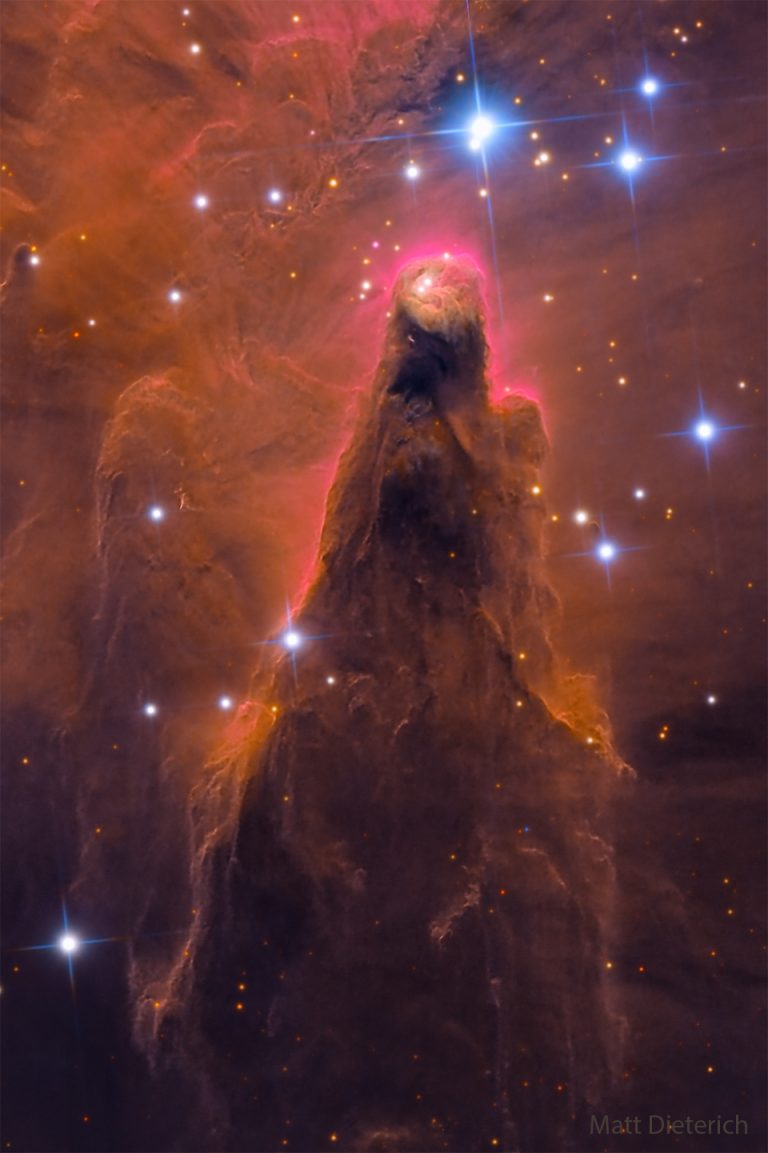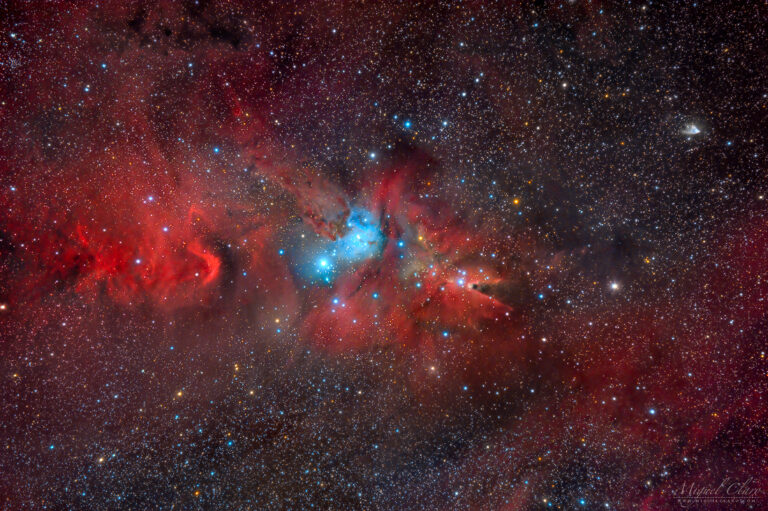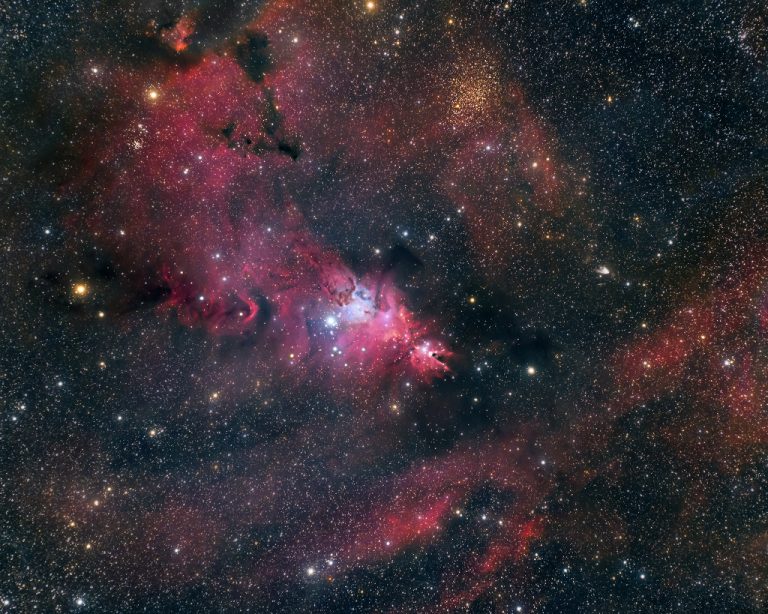哈勃影像: 锥状星云
2024年2月4日 The Cone Nebula from Hubble Image Credit: Hubble Legacy Archive, NASA, ESA – Processing & Licence: Judy Schmidt Explanation: Stars are forming in the gigantic dust pillar called the Cone Nebula. Cones, pillars, and majestic flowing shapes abound in stellar nurseries where natal clouds of gas and dust are buffeted by energetic winds from newborn stars. The Cone Nebula, a well-known example, lies within the bright galactic star-forming region NGC 2264. The Cone was captured in unprecedented detail in this close-up composite of several observations from the Earth-orbiting Hubble Space Telescope. While the Cone Nebula, about 2,500 light-years away in Monoceros, is around 7 light-years long, the region pictured here surrounding the cone’s blunted head is a mere 2.5 light-years across. In our neck…




